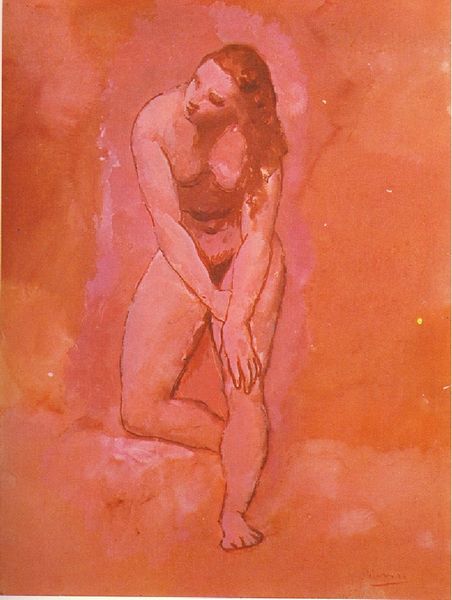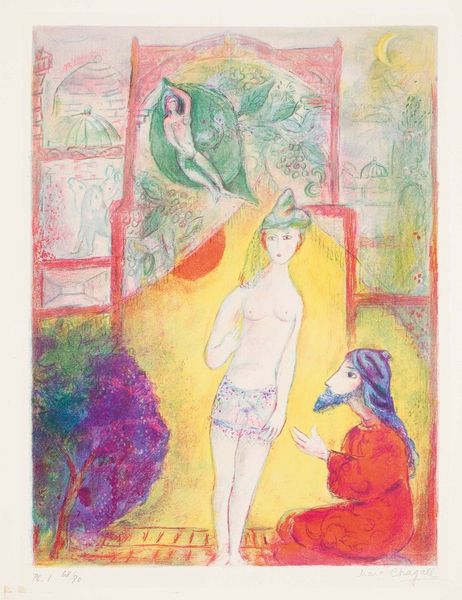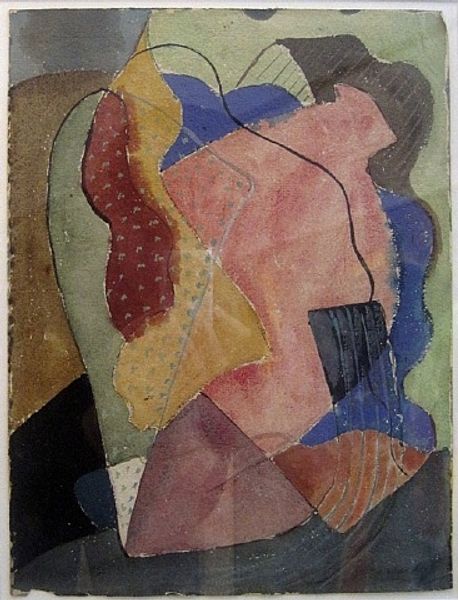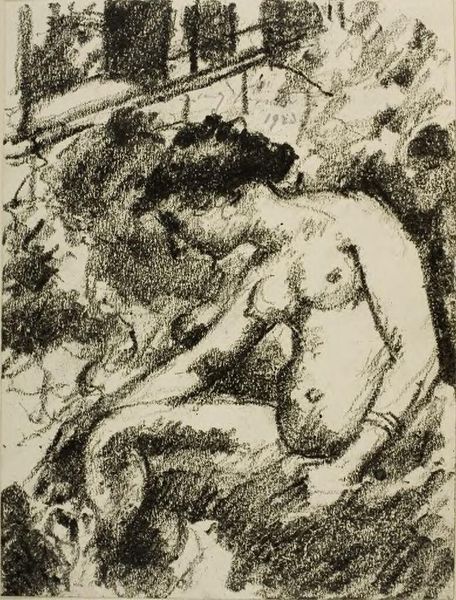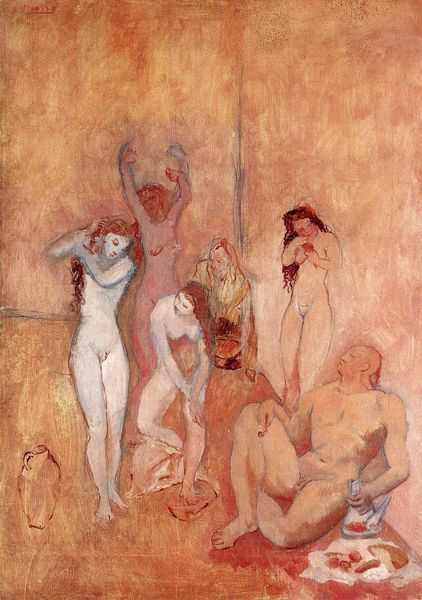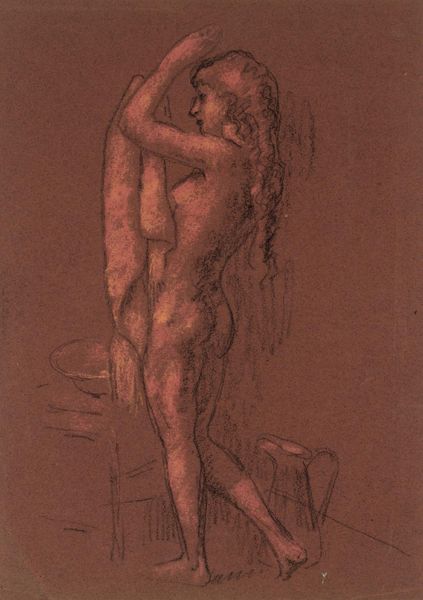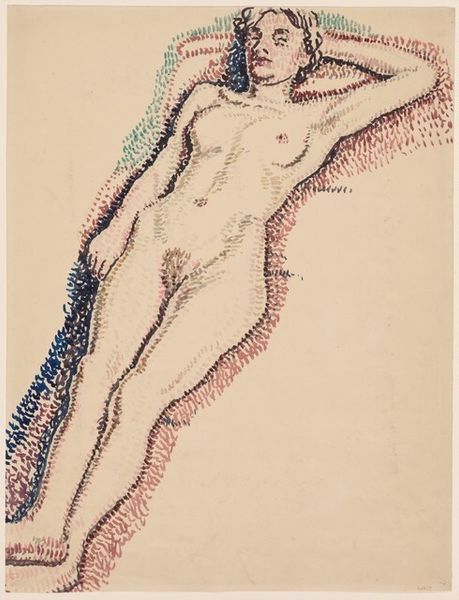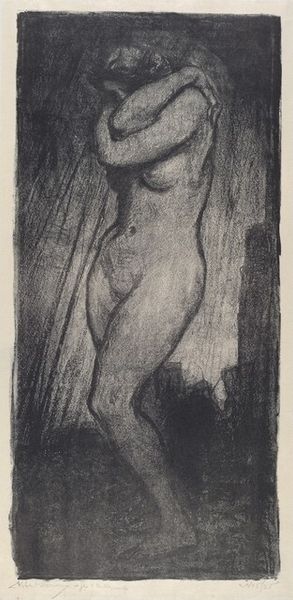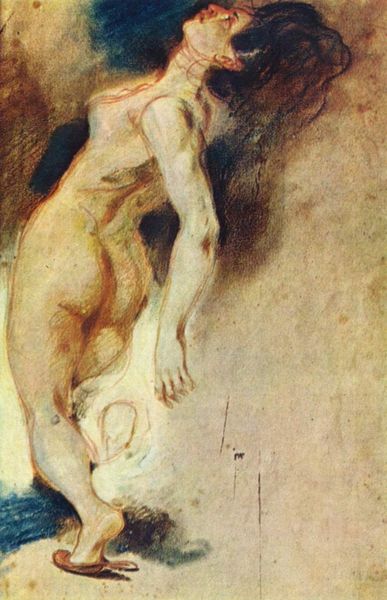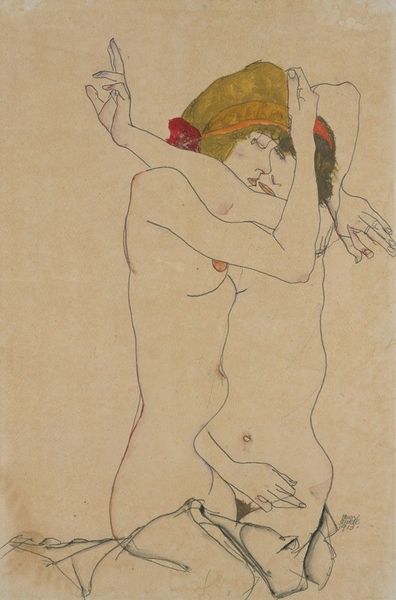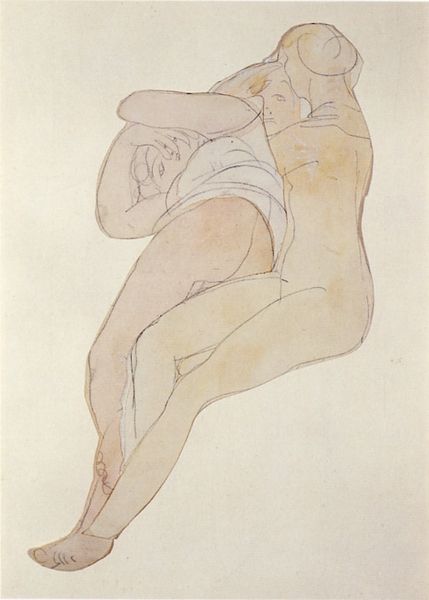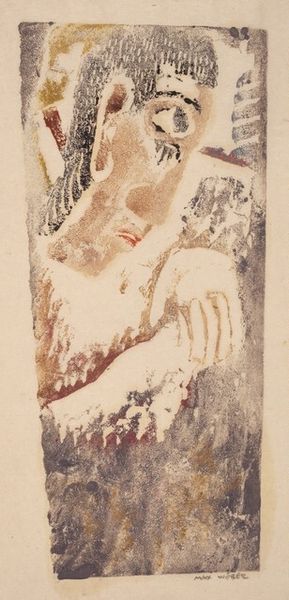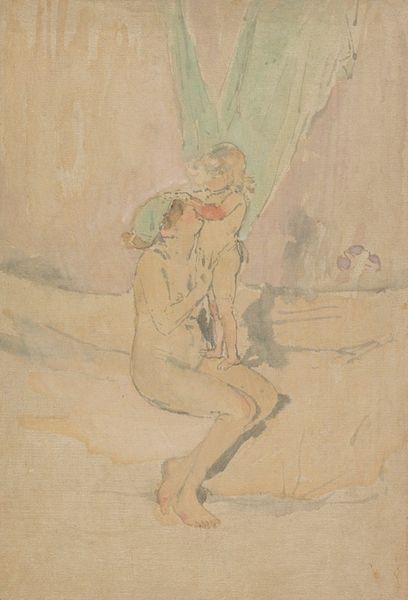
drawing, painting, watercolor
#
portrait
#
drawing
#
painting
#
figuration
#
watercolor
#
female-nude
#
intimism
#
coloured pencil
#
nude
#
modernism
Dimensions: 7 x 5 cm
Copyright: Public domain US
Curator: Picasso's "Toilette," created in 1906, immediately strikes me as an intimate portrayal. The watercolour rendering on paper lends it a delicate, almost fleeting quality. Editor: It's so fragile, isn't it? Like a momentary sketch that’s been quickly caught before it vanishes. Look at how little detail there is - just soft, rounded forms. I'm wondering about the support though; how has the paper aged and what pigments did Picasso have available? Curator: I think that fragility contributes to the symbolism of a fleeting moment of personal ritual. Consider the cultural weight of the "toilette" as a genre. Traditionally depicting a woman at her dressing table, it suggests a moment of transformation and becoming. The act itself – attending to one's hair – carries significance, often associated with beauty, sexuality, and vulnerability. Editor: Absolutely, but the context in which this work was made is just as vital. Picasso, during his pre-cubist period, was grappling with portraying the human figure using the artistic means available to him - that is to say paints, paper, brushes, and even coloured pencil if you examine it more closely. This piece may very well indicate Picasso moving away from traditional figurative practices towards abstraction and new modes of art production. Curator: That’s a keen point. Even in its relatively traditional depiction, the painting contains a feeling of modern liberation – in that Picasso doesn't simply repeat familiar representations. He seeks out essential forms, much like what he likely encountered when surrounded by classical sculpture in his earlier trips to Italy. There is also a softness here which anticipates future explorations of form in his work. Editor: I would agree, though let us not simply attribute artistic experimentation only to external sources, as the artist's environment must be factored in too! After all, it all boils down to material processes – Picasso choosing a certain brushstroke, the way pigment interacts with paper, and so on - to eventually construct our current understandings of a symbolic motif or idea. Curator: I hadn't considered the influence of the actual means of construction, or how our perceptions depend on this as much as historical traditions. A useful correction! Editor: Ultimately, I find this small piece provides a glimpse into a material chain, spanning production and our consumption of images. Hopefully, our talk encourages listeners to look closer to find traces and processes hidden within its creation!
Comments
No comments
Be the first to comment and join the conversation on the ultimate creative platform.
